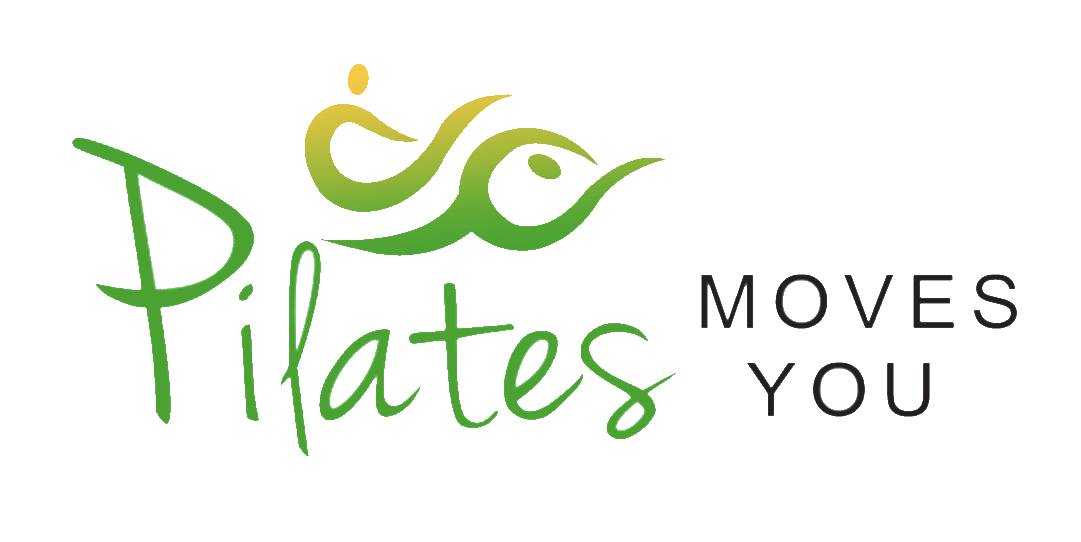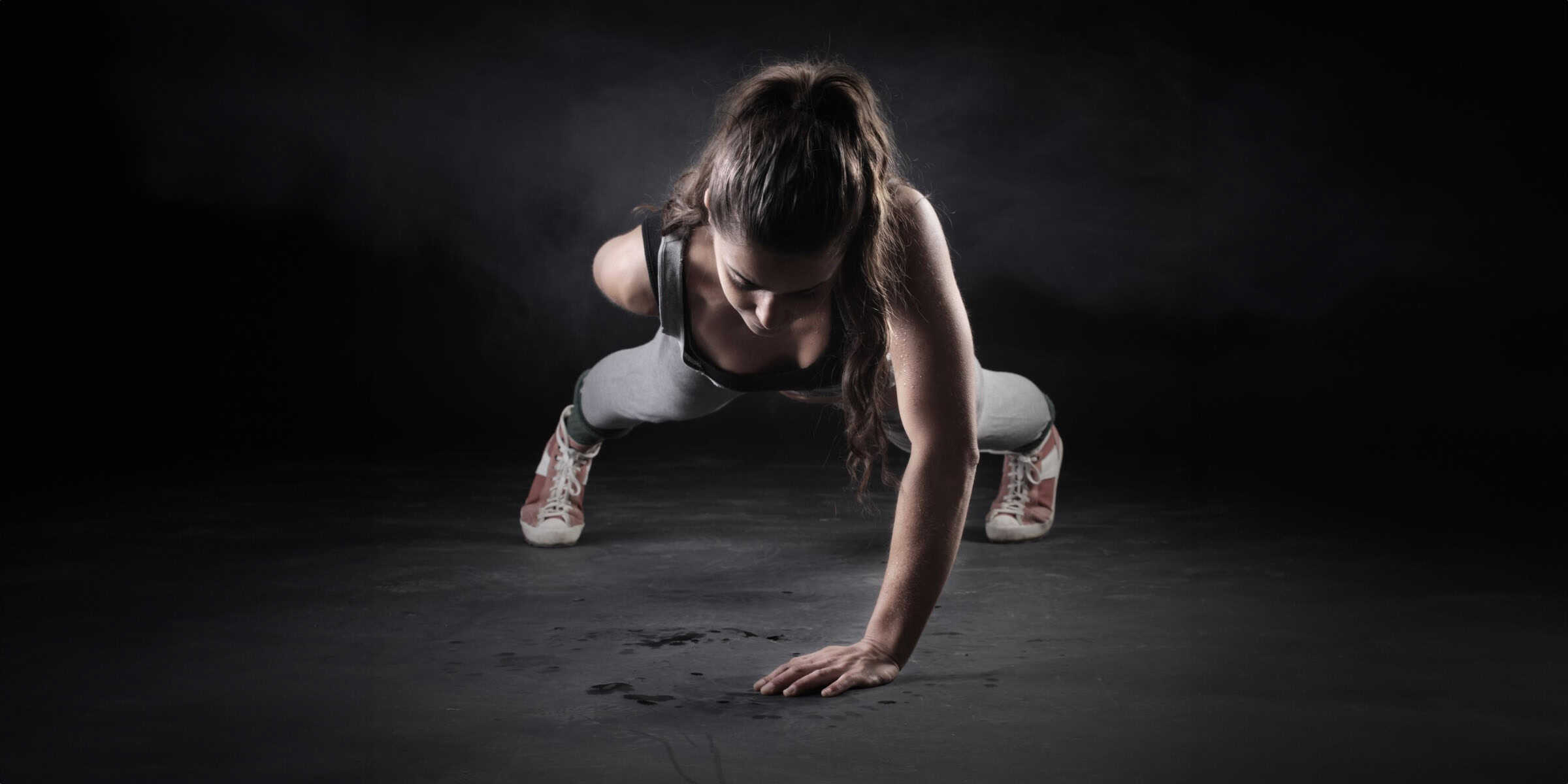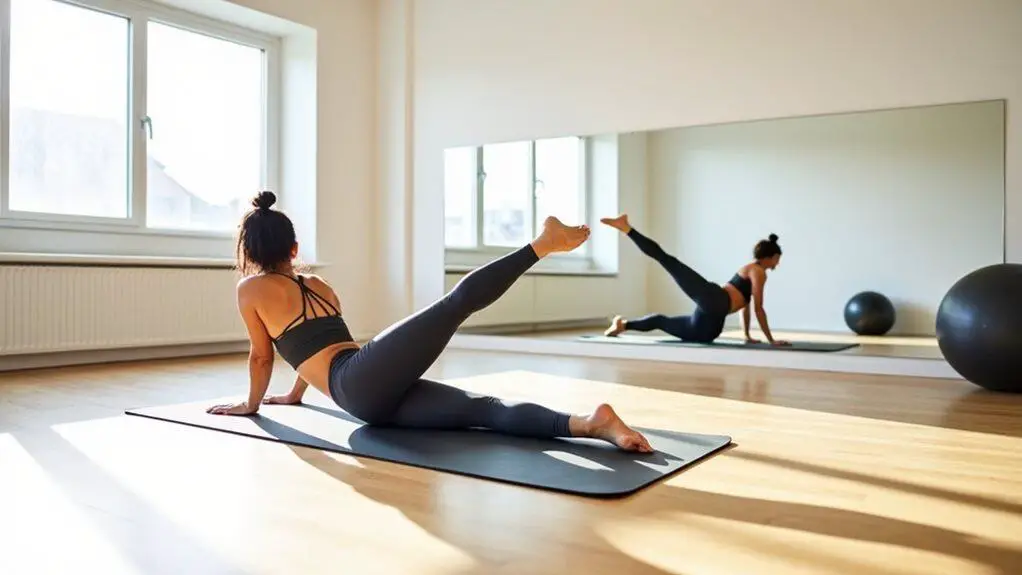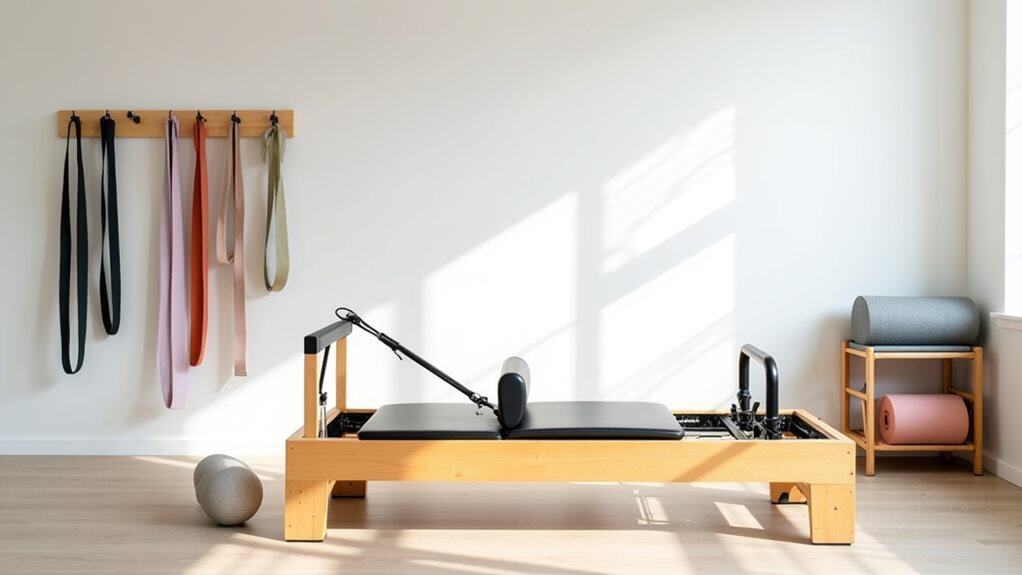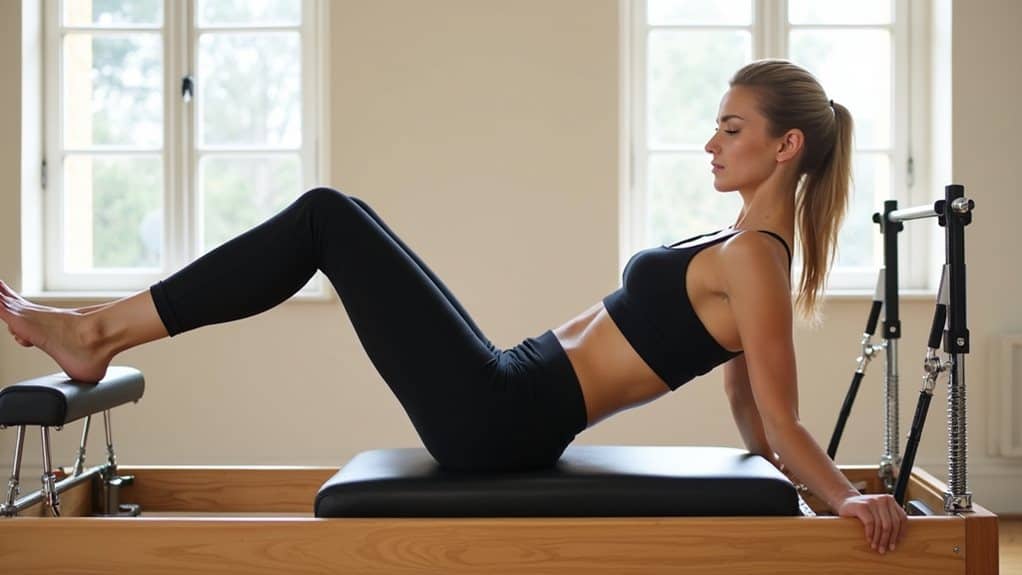You’re an athlete, always on the lookout for ways to up your game. Have you considered Pilates? Often overlooked, this form of exercise can significantly enhance your agility, coordination, and overall performance on the field.
This article will explore how Pilates can help you build core strength, increase flexibility, and manage injuries. You’ll learn to understand the importance of physical balance, the role of precision in sports, and how to develop better control over your movements.
It doesn’t matter what type of athlete you are – Pilates has advantages for everyone. By the end, you’ll have a clear understanding of how to incorporate Pilates into your training routine.
So, let’s dive into the world of Pilates, where you’ll discover how it can give you an edge over your competitors.
The Basics of Pilates
In terms of routines, Pilates is one of the easiest worksouts you can do as exercises can be done either on a mat or using specialized equipment.
Most will start with mat Pilates before adding in equipment. The apparatus, as it is known, includes devices like the Reformer, Cadillac, and Wunda chair. These pieces of equipment utilize springs to provide resistance, challenging your muscles and improving your control and precision. Equipment usage in Pilates is key to helping athletes enhance their agility and coordination.
You’ll find that the emphasis on controlled, precise movements in Pilates not only strengthens your core but also improves your overall balance and coordination. These improvements will translate into better athletic performance, whether you’re a dancer, a soccer player, or a marathon runner.
As we delve deeper into the benefits of Pilates for athletes, let’s focus next on understanding the importance of physical balance.
Understanding the Importance of Physical Balance
Imagine the thrill of effortlessly moving on the field, court, or track, all because you’ve mastered the crucial skill of physical balance. More than just staying upright, balance plays a pivotal role in your performance as an athlete. It’s the core element that combines strength, agility, and coordination, allowing you to execute complex movements with precision and grace.
Firstly, let’s debunk a few balance misconceptions. Balance isn’t just about standing on one leg or walking on a tightrope; it’s a complex interplay of visual, vestibular, and proprioceptive systems. Your ability to maintain stability during movement is as much about body awareness as it is about muscle strength.
Moreover, balance isn’t only physically beneficial; it also comes with mental benefits. Improved balance can increase your focus, concentration, and mental agility, making you a sharper, more effective athlete. It’s a skill that helps you navigate not only physical but also mental challenges, boosting your overall performance.
If balance is something you’re interested in check out my recent article 10 ways Pilates can help improve balance.
Understanding the importance of physical balance is your first move towards becoming a more agile, coordinated athlete. Ready to take it a step further? Let’s delve into the world of Pilates and explore techniques for improved flexibility.
Techniques for Improved Flexibility
It’s no secret that incorporating certain techniques into your routine can significantly improve your flexibility. Pilates, renowned for its focus on core strength and stability, also offers a plethora of stretching techniques that enhance flexibility.
Understanding flexibility benefits is crucial. It may not only improve your performance in various sports but also decrease the risk of injuries. In Pilates, the stretching techniques are designed to lengthen the muscles and increase the range of motion in the joints. This results in improved agility and coordination, essential for any athlete.
One of the most effective stretching techniques in Pilates is the ‘saw’. This technique stretches your hamstrings and back, promoting better flexibility. Another technique is the ‘spine stretch forward’. It helps in increasing the flexibility of your spine, allowing for a greater range of motion.
Remember, consistency is key. Regular practice of these techniques can lead to significant improvements in your flexibility. But don’t rush the process; gradual progression is the safest and most effective way to enhance flexibility.
As you continue to explore the benefits of Pilates, you’ll find that improving your flexibility also paves the way to a stronger core, which will be our next focus.
Building Core Strength
Let’s dive into the heart of the matter – building a rock-solid core! Incorporating Pilates into your fitness routine is a fantastic way to gain core strength, which is essential for any athlete.
Core-focused workouts not only develop your abs, but they also target your back, hips, and pelvic muscles, offering a comprehensive workout for the entire midsection.
Pilates provides a unique advantage over other forms of exercise because it emphasizes slow, controlled movements that require intense focus and precision. This leads to increased muscle control and balance, which are both key components of agility and coordination.
The core stability benefits of Pilates are remarkable. By strengthening your core, you can improve your overall athletic performance, enhance your balance and stability, and reduce your risk of injury. Moreover, these benefits transcend physical activity, helping you in everyday tasks as well.
As you advance in your Pilates practice and your core becomes stronger, you’ll notice that your athletic abilities are reaching new heights. But it’s not just about improving performance; a strong core can also play a significant role in managing and preventing injuries, which we will explore in the next section.
Managing and Preventing Injuries
Having a robust core isn’t just about increased performance; it’s also vital for managing and preventing injuries. Pilates can be an essential tool in your injury rehabilitation process, helping you regain strength and flexibility in a controlled, low-impact manner.
Pilates focuses on slow, controlled movements that effectively target specific muscle groups. This allows you to work on areas that may be weaker or more injury-prone without putting unnecessary strain on them. The following three benefits illustrate this:
- Increased Body Awareness: Pilates heightens the sense of how your body moves and works, leading to improved posture and alignment. This can help you identify and correct potentially harmful habits, reducing the risk of injury.
- Better Balance and Stability: Pilates exercises can help you develop a stronger, more balanced body, making you less susceptible to falls and injuries.
- Flexibility and Mobility Improvement: Regular Pilates practice can increase your range of motion, helping to prevent injuries related to inflexibility or stiffness.
While protective equipment can shield you from some injuries, nothing replaces the natural protection offered by a strong, flexible, and well-conditioned body.
As we delve into the role of precision in sports, it’s worth noting that Pilates offers a precision-focused approach to fitness that complements athletic training perfectly.
The Role of Precision in Sports
Precision plays a pivotal role in many sports, often making the difference between victory and defeat. It’s not just about strength or speed, but how accurately and consistently you can perform a particular movement or action. This is where precision training comes in, a critical aspect of an athlete’s regimen.
Precision training involves exercises designed to improve the accuracy of your movements. It’s about training your body to execute actions with the right timing, direction, and force. For example, a tennis player needs to hit the ball at the right spot, at the right moment, with the right force, to deliver an effective serve.
Sports psychology also plays a significant role in enhancing precision. It helps athletes maintain focus, manage anxiety, and develop mental toughness, all of which are critical to executing actions with high-level precision. It’s a holistic approach that combines physical training with mental conditioning.
This focus on precision is a stepping stone to developing control over movements. It’s about understanding your body, knowing your limits, and pushing them just enough to improve, not break. As you progress, you’ll find that precision and control go hand in hand – a crucial realization when you want to elevate your performance to the next level.
Developing Control over Movements
Developing control over your movements is a game-changer. It’s about pushing your body to its limits, not beyond, to ensure you’re consistently at the top of your game. By practicing Pilates, you can develop this movement mastery, enhancing your neuromuscular efficiency and improving your agility and coordination.
To begin with, let’s look at some key points that can help you understand and implement this concept:
- Incorporating Pilates into your routine helps reinforce proper movement patterns and corrects imbalances.
- Pilates exercises promote increased body awareness, crucial in executing precise movements.
- It improves neuromuscular efficiency, which means your nervous system and muscles work together more effectively.
- Movement mastery in Pilates helps build core stability, resulting in better balance and control.
- Regular Pilates practice can reduce the risk of injuries by strengthening muscles and improving flexibility.
Remember, it’s not about pushing for more reps or increasing weight, but rather, focusing on the quality of each movement. This approach encourages the body to function optimally, leading to improved performance.
As you continue to build control over your movements, you’ll notice significant advantages across all athletic pursuits. Let’s dive deeper into how these benefits can be specifically tailored to different types of athletes.
Advantages for Different Types of Athletes
No matter what sport you’re into, there’s a good chance you’ll find a boosted performance after honing control over your movements. Pilates offers sport specific benefits and cross training potential that can help you enhance your agility and coordination, crucial elements for any athlete.
Let’s look at how Pilates advantages stack up for different athlete types:
| Athlete Type | Benefit from Pilates | Specific Improvement |
|---|---|---|
| Runners | Improved core strength | Better running posture |
| Swimmers | Increased shoulder flexibility | Enhanced stroke technique |
| Basketball Players | Boosted balance | Improved shot accuracy |
| Cyclists | Strengthened lower back | Greater endurance on long rides |
| Golfers | Enhanced rotational power | More precise swings |
You see, Pilates’ focus on core strength, flexibility and balance can help runners maintain an efficient running posture, swimmers to refine their stroke technique, basketball players to improve their shot accuracy, cyclists to enhance their endurance, and golfers to improve their swing precision.
Understanding these benefits can help tailor your Pilates routine to your sport, maximizing your performance gains. Next, we’ll delve into how to effectively incorporate Pilates into your training routine for optimal agility and coordination enhancement.
Incorporating Pilates into Your Training Routine
Having explored the immense benefits of Pilates for various types of athletes, let’s pivot to a more practical aspect: how to integrate Pilates into your training routine.
Incorporating Pilates into your training isn’t as daunting as it may seem. You don’t need a complete overhaul of your current regimen. It’s about finding a balance that works for you.
So, where do you start? You begin with the Pilates equipment essentials. These consist of items like a Pilates mat, a reformer, a Pilates ball, and resistance bands. Each of these tools offers a different type of resistance, helping you to focus on control and flexibility, which are key to enhancing agility and coordination.
Next, consider scheduling Pilates sessions into your routine. Start small, maybe one or two sessions a week, and gradually increase the frequency as your body adjusts. Remember, consistency is key to reaping the full benefits of Pilates.
And don’t forget, Pilates isn’t an all-or-nothing approach. It’s about integrating it into your training in a way that complements and enhances your regular workout routine. By doing so, you’ll be well on your way to boosting your agility and coordination.
Conclusion
Incorporating Pilates into your training routine can significantly enhance your agility, coordination, and overall performance. It can improve your physical balance, flexibility, core strength, and control over movements.
More importantly, it can help you manage and prevent injuries, honing your precision in sports. No matter the type of athlete you are, Pilates offers numerous advantages.
So, don’t hesitate. Start experiencing the benefits of Pilates today!
